
Ifrane. (816k)
From the Wikipedia entry for Atlas Mountains:
The Atlas Mountains are a mountain range in the Maghreb. It stretches around 2,500 km (1,550 miles) through Morocco, Algeria and Tunisia. The range's highest peak is Toubkal, with an elevation of 4,167 m (13,671 ft) in southwestern Morocco. It separates the Mediterranean and Atlantic coastlines from the Sahara Desert. The Atlas mountains are primarily inhabited by Berber populations. The terms for 'mountain' in some Berber languages are adrar and adras, which are believed to be cognates of the toponym Atlas. The mountains are home to a number of animal and plants unique in Africa, often more like those of Europe; many of them are endangered and some have already gone extinct.
The three main regions in Morocco are from north to south the Middle Atlas, High Atlas, and Anti-Atlas.
All pictures are © Dr. Günther Eichhorn, unless otherwise noted.
From the Wikipedia entry for Ifrane:
Ifrane is a city in the Middle Atlas region of Morocco (population 73,782 in November 2014). The capital of Ifrane Province in the region of Fès-Meknès, Ifrane is located at an elevation of 1,665 m (5,463 ft). In Tamazight, the regional Berber language, "ifran" means caves.
The modern town of Ifrane was established by the French administration in 1928 during the protectorate era for their administration due to its Alpine climate. Ifrane was conceived as a “hill station” or colonial type of settlement. It is a resort town set high up in the mountains so that Europeans can find relief from the summer heat of tropical colonies. Ifrane is also a popular altitude training destination.
Ifrane is sometimes called the "Switzerland" of Africa, because of its Alpine climate.













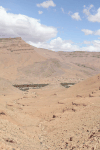





From the Wikipedia entry for Todgha Gorge:
The Todgha Gorges are a series of limestone river canyons, or wadi, in the eastern part of the High Atlas Mountains in Morocco, near the town of Tinghir. Both the Todgha and neighboring Dades Rivers are responsible for carving out these deep cliff-sided canyons, on their final 40 km (25 miles) through the mountains. The height of the canyon walls can vary, but in some places can be up to 400 m (1,310 ft) high.














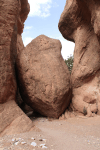
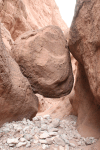
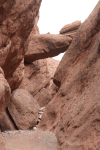
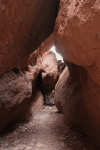
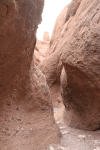
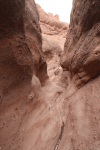

From the Wikipedia entry for Aït Ben Haddou:
Aït Ben Haddou is an ighrem (fortified village) (ksar in Arabic), along the former caravan route between the Sahara and Marrakesh. Most citizens attracted by the tourist trade live in more modern dwellings in a village on the other side of the river, although there are four families still living in the ancient village. Inside the walls of the ksar are half a dozen Kasbahs or merchants houses and other individual dwellings, and is a great example of Moroccan earthen clay architecture.
The Ksar of Aït-Ben Haddou is a UNESCO World Heritage Site.







This page contains 47 pictures with 1 species

Main page for المغرب (Morocco)
Page last updated on Tue Nov 2 15:51:36 2021 (Mountain Standard Time)
Middle and High Atlas on gei.guenther-eichhorn.com